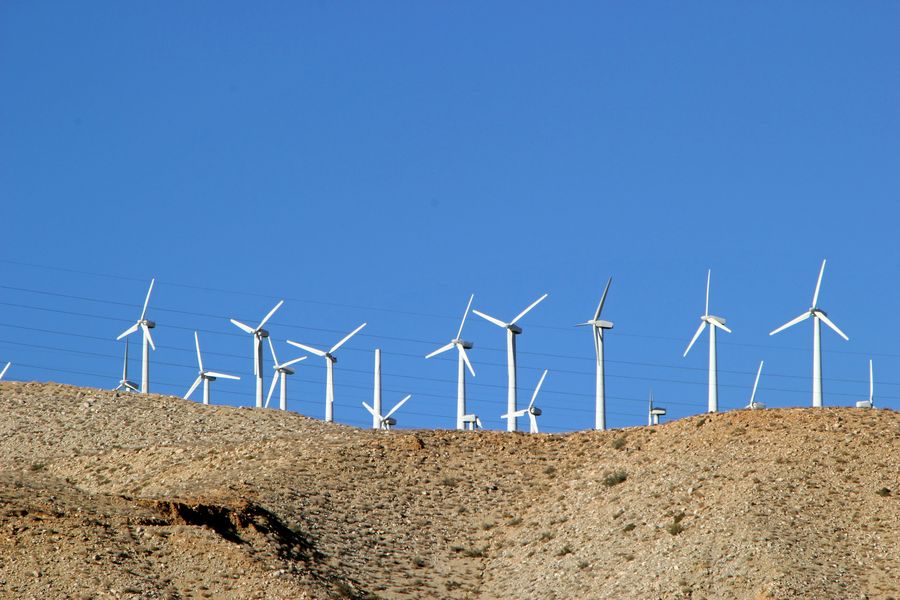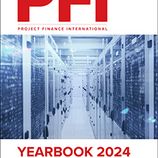The United States’ clean power sector has entered a new era of growth and innovation, with project developers racing to deploy record numbers of new renewable energy projects. The economics of such projects are buoyed by the Inflation Reduction Act of 2022, which made hundreds of billions of dollars available to the sector through tax credits, loan guarantees, and other incentives.1 By Jorge Kamine, partner and co-chair of the project finance and investment practice group, Eric Pogue, partner and global chair of power and renewable energy, and John R Thomas, partner and co-chair of the energy and commodities practice group, Willkie Farr & Gallagher LLP.
That public funding is being augmented by private investors – the financial institutions and corporations that are acquiring clean power projects, providing development and construction loans, making tax equity investments, and engaging in long-term offtake arrangements and energy hedges. These entities are deploying record-numbers of capital into the market in alignment with their publicly stated ESG and net-zero objectives. Strong public policy and a bullish private sector mean that in 2023, for every dollar invested into fossil fuels, about 1.7 dollars are now going to renewable energy.2
Given these strong tailwinds, it is not surprising that observers have suggested the industry’s momentum is practically unstoppable. Reality, of course, has proved more challenging. By way of example, several US offshore wind development stage projects have struggled to get off the ground, citing supply chain and interest rate challenges, notwithstanding favourable Inflation Reduction Act (IRA) programmes.3 Similarly, stock prices of clean power companies have been particularly hard hit in recent months.4
In this context, we consider suggestions that the IRA could reduce or even eliminate the need for certain power and renewable energy certificate offtake structures. Specifically, the notion that projects will continue to get built at a high-velocity if market participants insist on only local, hour-by-hour temporal matching offtake arrangements or even just rely on merchant power sales.5
Our experience – both historically and in respect of current transactions – suggests that projects will not get built without financing, and that such financing will not progress on a large scale without a variety of offtake structures and offtake participants. In this vein, we believe for at least the near term, long-term offtake contracts, in an increasing rather than decreasing spectrum of shapes and sizes, will continue to be the building blocks of successful project development and finance and, as such, key to achieving the policy goals of the IRA.
Show me the contract
Renewable energy and energy transition projects are generally capital-intensive infrastructure projects that require most of those capital outlays in connection with construction of the project. As a result, the first question project developers need to answer is if a project is bankable – meaning that the project developer will be able to secure long-term financing from a stable source. Obtaining that long-term financing is key to the developer’s ability to earn its target return. More specifically, the developer is looking to leverage and limit its equity investment in a given project to the maximum extent possible, and to then amortise the financing over several years of the project’s operating life so that the financing can be repaid from the project’s expected revenues. If a developer does not believe that it can obtain long-term financing on these terms, that project is not likely to be pursued.
Traditional project financing has historically satisfied the needs for that long-term financing: (i) it is provided to the operating company or one of its holding companies, so the developer is not the borrower; (ii) the lender’s recourse for repayment of the loans is limited to the project and its assets, with the project developer only having a limited number of specific, negotiated equity funding commitments to the project; and (iii) the loans are structured as term loans that are amortised over several years and repaid from the operating cashflows of the project. Given this structure, the predictability and reliability of the project’s revenue streams become essential to the bankability and sizing of the project financing.
At a minimum, project finance lenders expect that the project will have contracted revenues sufficient to repay the loans. This means the borrower will have entered into one or more long-term offtake contracts with a creditworthy counterparty that ensure the project will receive a guaranteed source and volume of revenue over the life of the loan that is more than sufficient to repay the loan and significantly mitigate, if not eliminate, the project’s exposure to pricing risk and market volatility for its output.
Over the past 15 years, traditional project financing has been overtaken by tax equity financing as the dominant source of long-term financing in renewable energy projects.6 These financing structures monetise federal and state tax credits and incentives created to encourage investment in renewable energy and energy transition projects by bringing in a company with significant taxable income that can best utilise these tax credits as an equity investor. These tax credits, when monetised, allow developers to lower the cost of capital compared with project finance by including the value of these tax credits in the return available to the tax equity investor. A lower cost of capital means more climate investment from a larger range of players providing billions of dollars in private investment in the push for net-zero.7
Tax equity financing shares many of the key features of traditional project finance, in particular the emphasis on projects with contracted revenues – ie, long-term offtake contracts or arrangements with creditworthy counterparties – covering a period of time that will give the tax equity investor reasonable assurance that it can earn its desired return from its share of the tax credits and cash distributions from the project within a reasonable period of time.
Like traditional project financing, a tax equity investor in large part must rely on the cashflows of the project to earn its return, so the bankability of the project turns on the quality of those contracted revenues. Similarly, tax equity investors do not want to take merchant risk as it relates to the revenues of the project – ie, exposure to short-term market volatility and uncertainty – which runs counter to the other features of the long-term financing being sought by the developer. Also like project finance lenders, tax equity investors are evaluating projects based on the sponsor/developer involved in the project, the commercial and technical aspects of the given project – eg, what technology does it use – and the legal, regulatory and commercial market in which it sells its production.
The evaluation can be significantly influenced by the lender/investor’s past experience with the different elements of the project, ie, the track record. More importantly, a longer track record with the different elements of the project can mitigate concerns that a lender/investor may have about risks associated with the offtake contract. Conversely, the shorter the track record, the more important it becomes for the offtake contract to guarantee long-term revenues that mitigate potential lack of experience with other elements of the project.
Again, the nature and quality of the offtake arrangements can play a critical role in the bankability of projects that will rely on tax equity or traditional project financing as their long-term financing solution. It bears mentioning that providers of “back-leverage” financing8, which often forms an important part of a developer’s financing plan, share very similar requirements and perspectives on risk and long-term, contracted revenues as tax equity investors and traditional project finance, so the same structural, contractual and legal considerations that we have discussed apply to obtaining that important part of the project financing.
Nevertheless, some commentators have criticised perceived gaps in the current ability to trace or directly measure on an hour-to-hour basis the relationship between government policies, private investors, and consumer energy demands through long-term offtake contracts. While we agree a clear, measurable, and direct correlation between consumer energy demand and clean energy supply should be a long-term goal, the obvious question is whether that goal can be achieved with the current array of resources and technologies available, and what the effect might be of seeking to implement more complex, novel structures.
A dramatic shift in project financing from long-term contracts to hour-to-hour structures might achieve a an amount of optimisation to the extent currently feasible, but ultimately it would delay the overall push for a renewable economy by driving major investors and offtakers out of the market. Short-term contracts require a much more involved, complex level of management than long-term contracts do, from both the clean energy developers, private investors and off-takers.
As noted above, we operate in an industry where scalability and a long track record are essential to bankability and, by extension, to attracting large amounts of investment. While the various tax and other government incentive programmes have been essential to lowering the cost of capital, and clear government mandates such as renewable portfolio standards have made net-zero climate goals a priority for many investors, the long-term bankability of these projects still ultimately rests on: (i) the strength, stability, predictability and robustness of the demand for the output and certainty of payment for output; (ii) ensuring price predictability, stability and transparency; and (iii) ensuring that the long-term revenue profile is not overly weighted and dependent on government incentives and trading markets that may be vulnerable to future legislative and regulatory changes.
The simple math is that, in order to get as many clean energy projects off the ground as necessary to meet net-zero goals, developers need investors beyond traditional project financers – the capital from tax equity investors is essential to keep the renewable energy sector expanding. While a minority of private investors might be able to shift to hour-to-hour contracts, the majority continue to need long-term offtake agreements.
Benefits of long-term offtakes
As discussed above, long-term offtake contracts are a crucial building block for achieving successful project financing for renewable projects and for attracting private investors such as tax equity investors. Given the need for a steady, dependable source of income for a project financing to work or for a positive investment decision to be made, hourly matched offtake does not provide a potential lender or investor with the certainty of revenues needed to make the long-term bet required by a clean energy project. And our experience is that the type of the offtake contract (long-term versus hourly matched) influences the type of the offtaker.
Simply put, hourly matched offtake arrangements risk driving from active participation in the market for renewable power some of the most significant categories of offtakers: corporates, credit intermediaries, and aggregators. These offtakers have come to serve an essential role in the shift to net-zero. Their continued participation in the market for clean power and renewable energy is dependent on long-term offtake agreements.
* Corporates – The multitude of corporate entities contracting to purchase power directly from projects continues to expand. These corporates include not just traditional industrial consumers of power and institutions such as universities, but increasingly tech companies, all of which have significant power needs to operate and a meaningful carbon footprint to consider. Environmental, cultural, political, and market factors have driven many of these corporates to focus on sourcing their power needs to the greatest extent possible from renewable generation sources only, and/or to contract with renewable power projects to purchase renewable energy credits in order to offset their use of non-renewable energy and the other emissions generating aspects of their businesses.
The terms and conditions under which corporates contract with renewable projects – ie the contract type, the pricing mechanisms, the included products, even just the name of the contract – can vary considerably. A contract may contemplate the forward purchase of all the generated power and all the associated renewable energy credits, a forward purchase of a defined portion of the project’s generation, generation capacity or renewable energy credits, some aspects of power storage if the project has storage capacity, or may contain optionality for the purchase and delivery of one or more of these products. One size does not fit all. However, our experience has shown us at least one primary commonality across these contracts: a long-term commitment to purchase and provide revenue stability to renewable energy generation projects, with that commitment not based upon the corporate offtaker’s hour-by-hour demand for power.
As we discuss below with respect to credit intermediaries and aggregators, a shift to an hour-by-hour power purchasing contract is likely to prove impractical and possibly infeasible in the short term for corporate offtakers of renewable energy. This would be an unfortunate change, as many of these corporate offtakers are precisely the type of offtaker a project lender or investor seeks in making its decision as to whether or not to lend or invest: a large, creditworthy entity willing to make a long-term contractual commitment to a renewable project to provide the project with the steady and reliable source of revenue it needs.
* Credit intermediaries – Credit intermediaries are entities that purchase renewable power not for their own use, but rather for the further sale of that power to other entities. Credit intermediaries include commodity trading houses, banks, and other highly-rated corporate or financial institutions. The active participation of these entities in the renewable energy offtake markets increases competition and demand for renewable energy, benefiting projects from a pricing perspective.
More importantly, the role of the credit intermediary is, on the one hand, to provide a project with a creditworthy offtaker to support a project financing or to attract investors, and on the other hand, to relieve a project and its managers of the necessity to assess, monitor, and manage the credit risk of what could be potentially multiple offtakers from the project. The credit intermediary takes a principal position in both buying and re-selling the power, and in doing so, assumes the credit risk to other offtakers – some of which may be credit-weak or un-rated end-users. In particular, a credit intermediary such as a bank9, which is in the day-to-day business of making credit decisions and accepting credit risk, is well positioned to assess, monitor, and manage the creditworthiness of end-users, and to undertake credit risks a project is not willing to take or that the project is prohibited from taking by its project finance lenders.
However, the credit intermediary is just that – an intermediary, and not an end-user of renewable energy. Our observations and experience working closely with multiple credit intermediaries has given us a broader perspective on the role of offtake agreements. Critically, we see that an hourly matched offtake model is likely to be not only impracticable but in many instances may prove infeasible for a credit intermediary, both as a purchaser and seller of renewable energy. While credit intermediaries do on-sell power to end-users or other intermediaries, including on a “shaped basis,” they generally seek to do so on the basis of up-front, agreed volumes for a fixed period of time.10
A structural change towards an hourly matched offtake model risks sacrificing the important role credit intermediaries play in facilitating the financing of projects and assuming end-user credit risk. In their absence, each project and its managers would need to perform their own due diligence on, and credit assessment of, each of their offtakers. These are not the core strengths of project developers, and a market structure that would necessitate meaningful time and resources being spent by project managers on active credit risk management would detract from their primary role of developing, constructing, and operating new projects and generating clean energy.
The active participation of credit intermediaries such as banks in the physical renewable offtake market also facilitates the more efficient operation of the financial power markets through physical and financial price convergence. Integrity of the financial price for power is crucial for projects that may both sell physical power and hedge their exposure to the floating price of power through derivatives such as over-the-counter swaps or futures contracts. If a project did choose to risk-manage through the use of a derivative, then any divergence in the physical price for power delivered by the project to point A versus the price paid under the project’s derivative for the notional delivery of power to point A erodes the intended purpose of the derivative in that the hedge is rendered imperfect.
Participation by banks, in their role as credit intermediaries engaging in multitudes of physical offtake transactions, and additionally in their role as swap dealers active in the financial settled commodity derivatives markets, facilitates price discovery, enhanced pricing accuracy, and price convergence. By driving credit intermediaries out of the market, we may see an adverse impact on physical and financial price convergence.
* Community choice aggregators – Community choice aggregators are also active in the physical renewable energy markets as purchasers of clean power under long-term power purchase agreements. Community choice aggregators (CCAs) are, typically, local not-for-profit entities established by local towns, cities and counties and formed for the purpose of purchasing electricity for its residents and businesses. Importantly, CCAs are empowered to purchase power from sources selected by it (eg, one or more wind or solar projects) in lieu of residents and businesses having to purchase their electricity from an incumbent and sometimes privately owned utility, which is often generating power from a combination of conventional and renewable resources.
In California alone, there are 25 CCA programmes serving more than 14m customers, helping towns, cities and counties meet climate action goals by providing residents and businesses with more energy options.11 It has been noted that that power can be delivered by CCAs to residents up to 20% cheaper than power delivered by traditional utilities, because of the collective buying power of entire communities and current market trends.12 Recent active participation by some CCAs in municipal bond prepayment transactions have provided further price reductions in the cost of electricity ultimately paid by its residential consumers.
Many of the contracts entered into by CCAs are long-term fixed volume power purchase agreements with renewable wind or solar projects. Like credit intermediaries, the CCA is an aggregator and not itself an end-user. It is fair to assume that the challenges CCAs would face under an hourly matched market construct are similar to those of a credit intermediary, in that purchasing only hourly matched electricity is likely to be impractical, if not impossible. A market overhaul as suggested by some commentators would upend an aggregated purchasing model that, to date, has benefited 1) project developers – by increasing the number of large, creditworthy, long term purchasers of power, 2) ultimate end-users of power – through reductions in the retail cost of power, and 3) climate action goals – through the ability of CCAs to choose the source of the power consumed by its residents and businesses.
Near-term role
Our experience in the renewable energy market, working with private investors from corporate entities to credit intermediaries, has shown us that the push for net-zero requires more offtake solutions, not fewer. We need to significantly expand the number of bankable projects across the energy value chain, utilising an array of technologies – which means we need to ensure there is the demand required to make those projects possible.
The US is still falling short of the annual investment needed in the clean energy sector to achieve net-zero goals.13 Fortunately, the critical need to rapidly accelerate private sector investment has never been clearer. Moreover, we have never witnessed such a broad array of government policies and industry initiatives directed at pushing us towards those goals as we have with the IRA. Greater commercial deployment of these projects and technologies means ensuring project developers have access to long-term financing from investors and providers of that financing are focused on the quality, quantity, duration and reliability of the contracted revenues that will form the basis of the financial model for the project.
The authors wish to thank Willkie associate Dana Lake for her contributions to the article.
Footnotes
1 - See, Loan Programs Office, Inflation Reduction Act of 2022 (Sept. 22, 2023). https://www.energy.gov/lpo/inflation-reduction-act-2022.
2 - IEA, Clean Energy Investment is Extending Its Lead Over Fossil Fuels, Boosted by Energy Security Strengths, International Energy Agency (May 25, 2023) https://www.iea.org/news/clean-energy-investment-is-extending-its-lead-over-fossil-fuels-boosted-by-energy-security-strengths.
3 - See, eg, Jeff St. John, The US Offshore Wind Industry Faces A Moment Of Reckoning, Canary Media (Nov. 2, 2023) https://www.canarymedia.com/articles/wind/the-us-offshore-wind-industry-faces-a-moment-of-reckoning. (“The high hopes and outsize investments that dominated the offshore wind sector...have been undermined by...the economic and supply-chain dislocations of the Covid pandemic; the global energy shock caused by Russia’s invasion of Ukraine; the broader inflation in costs of raw materials like steel; and rising financing costs driven by interest-rate increases...)
4 - See, Anna Hitenstein, Why the Shine Has Come Off Clean-Energy Stocks, The Wall Street Journal (Oct. 23, 2023). https://www.wsj.com/finance/investing/why-the-shine-has-come-off-clean-energy-stocks-5ae0a195.
5 - See, eg, Ethan Howland, As Google, Meta Eye Clean Energy Buys, Researchers Find Widely Used Strategy Has Scant Carbon Benefits, Utility Drive (Sept. 8, 2023). https://www.utilitydive.com/news/google-meta-clean-energy-procurement-zero-lab-24-7-carbon-matching/693108 “All or nearly all of the carbon-free energy procured by voluntary market participants pursuing volumetric or emissions matching strategies would have been generated anyway.”
6 - These types of financings tend to be highly structured and complex in order to balance the requirements under the tax code with investment return requirements and desire to limit investor exposure to certain project risks. The most common tax credits for renewable power and other energy transition projects are the production tax credit and the investment tax credit. The production tax credit (PTC) is available for production and sale of electricity from certain renewable sources including wind, biomass, hydropower and is available for 10 years. The investment tax credit provides a one-time credit based on the aggregate cost of the qualifying property used for the project.
7 - Ren21, FEATURE: CORPORATE SOURCING OF RENEWABLE ENERGY, Renewable Energy Policy Network (2018). https://www.ren21.net/gsr-2018/chapters/chapter_08/chapter_08/. Corporate entities sourced 465 terawatt-hours (TWh) of renewable electricity through 2017.
8 - Backleverage financing refers to a type of debt financing provided to the entity that owns the project developer’s equity interest in the project and which is sized and based on the expected distributions to that borrower entity with limited recourse to the project developer, structural subordination to the tax equity investor and no direct recourse to the assets of the project. Given that the back-leverage financing can only be repaid from distributions, the provider has a similar focus on the long-term offtake arrangements from the project.
9 - Not only are financing institutions such as banks regulated by federal banking regulators, in most power markets in the US, such an entity must also seek approval from the Federal Energy Regulatory Commission to on-sell the power it purchases at market based rates, the MBR Authority. In granting, denying and/or monitoring compliance with the MBR Authority regulatory regime, FERC, seeks to prevent the aggregation of inordinate market power within an institution and its affiliates.
10 - We do note that in the aftermath of Winter Strom Uri, projects, investors, banks and other offtakers continue to evaluate lessons learned and to consider their respective operational and contractual risk profiles accordingly.
11 - CALCCA: Advancing Local Energy Choice, Community Choice Aggregation: What Is It? (Accessed Nov.18, 2023) https://cal-cca.org/powered/.
12 - EPA, Community Choice Aggregation (Oct. 27, 2023). https://www.epa.gov/green-power-markets/community-choiceaggregation#:~:text=CCA%E2%80%94also%20known%20as%20municipal,from%20their%20existing%20utility%20provider.
13 - American Council on Renewable Energy, Expectations for Renewable Energy Finance in 2023-2026, (June 2023), https://acore.org/wp-content/uploads/2023/06/ACORE-Expectations-for-Renewable-Energy-Finance-in-2023-2026.pdf.

To see the digital version of this report, please click here.
To purchase printed copies or a PDF of this report, please email leonie.welss@lseg.com














